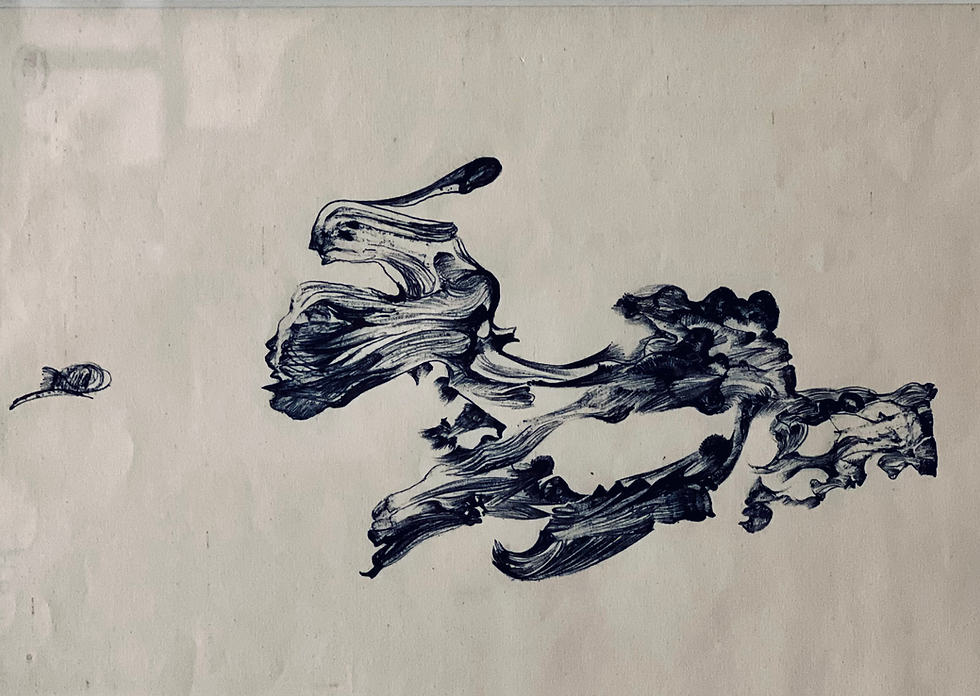The Beholder’s Share
- Roxanne Noor
- Mar 29, 2024
- 3 min read

It wouldn’t be simplistic to say that everything in life is a relationship; a relationship because there’s always one entity interacting with another, there’s no true solitude. Even when we sit in the forest alone, we are not truly alone; there is the breeze that raises the small hairs on our skin, and there is the steady Earth that pushes back against our feet. One force is responding to another, and through the continuity and depth of each response, a relationship develops. Relationships have different stages of closeness, of intimacy, of knowing.
Art is an important relationship, one between the viewer and the object of perception. It can be superficial or profound based on the viewer’s consciousness and the artist's intention. When going to a gallery or museum, at first there’s a distance between the art and the viewer. The viewer is a spectator, merely watching. The relationship then deepens when the art makes the viewer feel enough to do something with what they see. Maybe the piece of art plants an idea in the head, maybe it evokes a past memory, maybe it stirs an unfulfilled longing, or maybe it reframes the viewer’s reality.
In the art’s ability to provoke thought and emotion, the viewer is elevated from being a spectator to a participant; now they are actively engaging with a piece. The viewer participates by co-creating a narrative of meaning. Icelandic artist Olafur Eliasson says, “I always try to make work that activates the viewer to be a co-producer of our shared reality.” The piece of work then becomes a convergence of the artist's will and the viewer's response to that intent. Art is an invitation into the reality of the artist who made it, but it’s also a reflection of the viewer who perceives it. The viewer makes the art more real, their seeing animates a piece.
Philosophers have contemplated upon the question, “If a tree falls in the forest, and there's nobody around to hear, does it make a sound?” With this notion, art can only exist in and of itself because the viewer is there to observe it and build upon its foundation. The viewer is the one who is able to transcribe colors into emotion and shapes into stories.
Art historian Alios Riegel says, “Art is incomplete without the perceptual and emotional involvement of the viewer.” This is a completely unique experience. A person can have many relationships, but never the same relationship twice; each person and their view are a new world that can never be repeated through another. Art allows us to invest emotionally and build upon that sense of psychic urgency. We want to be invited into feeling.
Artist Jeff Koons describes what he does as an attempt to reach transcendence with the viewer. He states, “I believe very much in the beholder’s share, that an artwork is completed in the viewer. The object is just some kind of transponder.” In this way, there is a responsibility and a responsiveness that’s required of the viewer. This transcendental state can only be reached with a high quality of attention and an open presence. In the same way that a lover becomes unguarded to foster closeness in partnership, a viewer must leave their mind slightly ajar. There must be spaciousness and openness.
If everything is a relationship, and the quality of relationship determines the quality of life, then what makes a relationship good? In the relationships that touch us most, we feel seen. Art invites us to look at it and see ourselves. We discover something that was hidden or dimmed within us. Art opens the door of a once closed room where light can pour in and we are illuminated through seeing clearly.



Comments